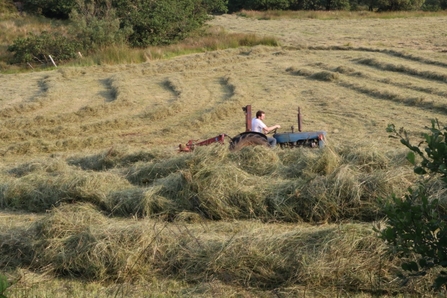The importance of farming to the landscape and economy of Northern Ireland is plain to see on any journey across Northern Ireland. Over 75% of our land area is managed for agriculture in one form or another, with 25,000 farms and supporting industry contributing to around 5% of jobs.
The Gross Value Added (GVA – a measure of economic productivity) of agriculture in Northern Ireland is significantly higher than other parts of the UK (almost twice the average), and as a significant net exporter of in-demand and quality products is considered a cornerstone of the economy.
Given the importance of agriculture as an industry, it is no surprise that its contribution to biodiversity loss and greenhouse gas emissions has come under increasing scrutiny. Post-war policy for agricultural intensification was understandable, but catastrophic for biodiversity, particularly species-rich grassland and peatland. Fragments that remain are of huge importance.
At last count, 26% of greenhouse gas emissions in NI were from agricultural sources (compared to a UK average of 10% where agriculture is not as significant an industry) and with net zero targets being anticipated in the next 25-30 years, the industry is now under some pressure to significantly reduce their contribution. The industry is not shirking this challenge. Indeed, it stands to lose a lot under current climate trends but feels increasingly like the scapegoat.
Farms will have to be innovative and adapt to remain productive and profitable. We must work with farmers to support them through this transition.
In advance of policy and legislation, consumer trends and pressure for greener production have already started to drive change. This is to be welcomed but puts pressure on traditional models of production with the potential to destabilize the entire industry. Coupled with increasing demands for green energy, particularly anaerobic digestion, there is the potential for a rapid change to land use. For the sustainability of farming and to ensure wise land-use change that supports biodiversity and carbon targets, we must work with the farming industry to co-design future models of food production and provision of ecosystem services and public goods and be sure to avoid the unintended consequences of well-meaning policies that are environmentally and financially costly to put right.
Farming has always been at the mercy of market and climate volatility, and recent events suggest this is set to continue with the impacts of droughts, floods, Covid-19, Brexit and wider global geopolitics creating a perfect storm of rising prices. From an environmental perspective, the recent increase in costs of inorganic fertilizer will see a welcome reduction in usage, slowing the loss of habitat and reducing eutrophic runoff into watercourses. However, farms will have to be innovative and adapt to remain productive and profitable. We must work with farmers to support them through this transition. We are already seeing alternative ways to increase production that are less energy-intensive and more biodiversity-friendly, with herbal leys and agroforestry proving to be effective at increasing forage yields with reduced inputs, and less sensitivity to periods of drought than rye-grass monocultures.


